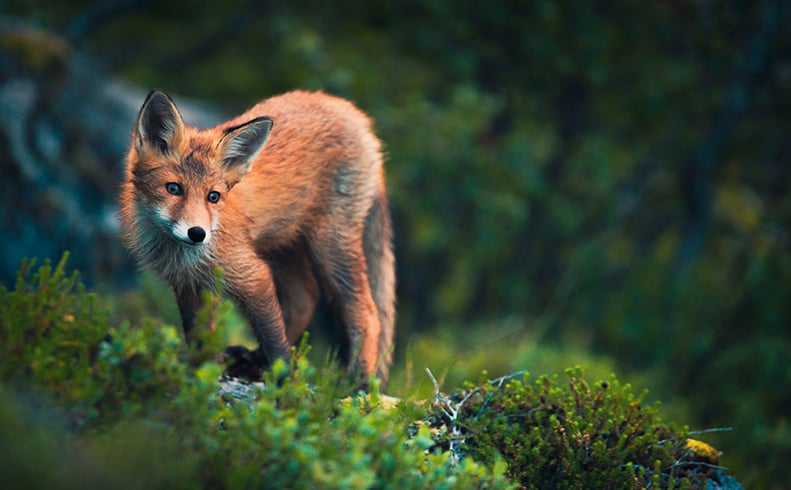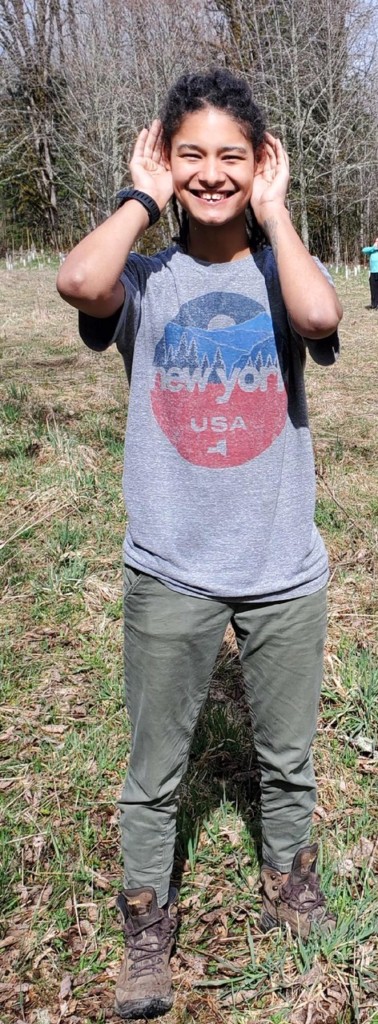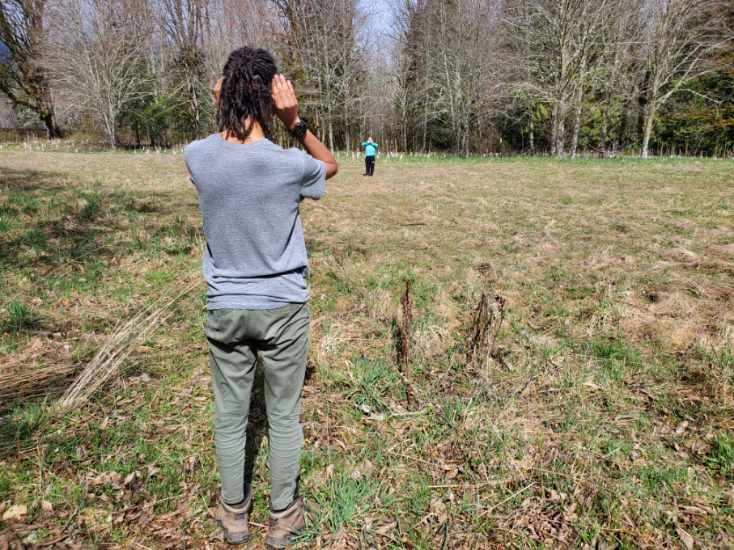
Mountain School @ Home: Lesson 7 – Adaptations
 Students! Parents! Teachers! During this time of school closures and stay-at-home guidelines, North Cascades Institute is sharing lessons and activities from our talented Mountain School instructors. We hope these will inspire students of all ages to continue to learn about the natural world and discover new connections to the outdoors from home. This lesson was created by Mountain School instructor Bridget Stuart. Find more lessons and activities on our blog or website.
Students! Parents! Teachers! During this time of school closures and stay-at-home guidelines, North Cascades Institute is sharing lessons and activities from our talented Mountain School instructors. We hope these will inspire students of all ages to continue to learn about the natural world and discover new connections to the outdoors from home. This lesson was created by Mountain School instructor Bridget Stuart. Find more lessons and activities on our blog or website.
Adaptations
Think about an animal that lives near you. Maybe there are squirrels that scuffle up the trees in your backyard, fish that live in the stream at the park, Stellar’s Jays that make a lot of noise in the trees or black bears that sleep in the far hills throughout the winter.
Now, think about what one of these animals needs to survive—where does it find its food? How does it protect itself from the sun, rain, snow? What special qualities does it have to be able to survive in your backyard, in the park down the road, in the sea, or in the mountains?
These special qualities that animals have to help them survive most effectively in their habitat are called adaptations. Adaptations are changes that occur over long periods of time, not days, weeks or months but multiple years and generations.
In this lesson, we are going to embody a couple of different characteristics that different animals have to understand what life would be like if we could hear sounds from further away, have a greater sense of smell, or see in the dark. These characteristics serve these animals as adaptations that play crucial roles in their ability to survive.
Amplified Ears
Have you ever taken a walk and noticed a deer in the woods: quiet, still, camouflaged? If so, it’s likely the deer was aware of you long before you were aware of it. It’s possible you may have even passed by deer before without noticing them. As a prey animal or animal who is hunted by other animals, deer have many special adaptations to assist in keeping themselves safe. One of these adaptations is their large ears that can rotate slightly to hone in on specific sounds. Can you rotate your ears to focus on sound? I can’t! Follow along with the activity below to see what it would be like if you had larger ears, like a deer.

Make your own amplified ears:
Place your fingers and thumb side by side on each individual hand. Curl your fingers inward slightly to make a C-shape with each hand. Next, place your hands in this shape behind your ears. Did you instantly notice a change in the sounds around you?
Test your amplified ears:
- Go outside and mark an X on the ground where one person will stand with their eyes closed and hands at their side.
- The other person will start at the X and walk away while saying one word every few seconds (I often say “goodbye”) at the same volume each time.
- When the person standing on the X can no longer hear the other person they will wave their arms and yell out “I can’t hear you”.
- Measure the distance from the X to the spot where the other person could no longer be heard.
- Repeat steps 1 through 4 with the person on the X using their cupped ears. Be sure to mark the second location as well.
Things to contemplate:
- Could a deer survive without its large ears? How might its life change?
- What other animals share this characteristic? Are there predators that also have large ears and if so how might this characteristic help them survive?
- How might a human’s life change if we all had large ears?

Nocturnal Eyes
Humans can see in the dark! Typically, this takes 10-25 minutes for our night vision to fully kick in so that we can see our surroundings more clearly than when we first step outside from a bright room. As humans, we are adjusted to being active both in the daytime and at night. Nocturnal animals (animals active at night) have specialized eyes which contain mostly rods (rods allow vision in low light) and few to no cones (cones allow you to see color). Humans however have many rods and cones allowing for both sight in low light and visible color. Try the activity below to experience the difference between our eyes while one is adjusted to night vision and the other is not.
Directions:
- Find the darkest space you can find—a room in your home, a closet, or outside. (Be sure that there is no external light, from street lamps etc.)
- Once you find a space of total dark darkness, turn the lights (or a flashlight) on!
- Everyone present will need to close and cover one eye with their hand to completely block all of the light to this eye.
- With the other eye, stare at the light in the room (or flashlight) for the duration of at least 3 minutes (or for the entirety of one song).
- After 3 minutes, turn the lights off and move your hand back and forth between both eyes.
Things to contemplate:
- What animals can you think of that are primarily active at night? What advantages might you have to be more active at night than in the daytime?
- Do you think animals who are active at night have to wait for their eyes to adjust to the light? Create an adaptation you could give an animal to assist with their night vision.
- Do you think street lights or porch lights might affect animals who are active at night? How so? What can you do to help nocturnal animals?
As humans, most likely we aren’t holding a hand over our eye to enact our night vision more quickly or wearing our ear cuffs all day long to hear sounds more closely. However, humans are constantly altering their environments or their bodies to assist with their comfort. Can you or your student think of ways humans adapt to their environment each day? What comes to my mind is adding layers on a chilly day (as a bear might grow in a thicker layer of fur as winter approaches) and putting on sunscreen (as a reptile has scales or a bird has feathers which may prevent sunburn). Below is one final activity to continue with our thought process of the many characteristics humans and animals hold and how each characteristic plays an important role.
Resource
To learn more about how nighttime lights may affect bird migration and what you can do to help, visit www.audubon.org/conservation/project/lights-out
Adaptation Drawings
Directions:
- Write the name of one animal (this could include humans) that you are familiar with or are interested in learning more about.
- Write down the animal’s ideal habitat (swamp, desert, mountain peak, or sea, etc.)
- Draw a picture of the animal that you chose. Label three of its qualities that assist with its survival and write a blurb about each. For example, beavers’ flat tails can be used for slapping the water to warn other beavers of threats and to scare predators. If you aren’t sure about how certain characteristics of your chosen animal assist with its survival, do some research!
- Choose a new animal or use the same one as last time. Next, choose a habitat that this animal does not usually live in. For example, a Giraffe in North Cascade National Park. (For extra creativity, choose a totally unfamiliar habitat like the planet Mars, the core of the earth, or the bottom of the sea.
- Now, draw this animal in its new habitat with at least 3 adaptations that you would give it to help it survive more efficiently.
I encourage you and your student to continue thinking about adaptations as you see different species within your community or out your window. I challenge you to provide animals with the space and habitat they need to thrive within your community.
Fox photo by Sami Takarautio.
Thank you for helping us offer these at-home lessons for transformative learning experiences in nature by making a gift at www.ncascades.org/give.

